
THE NAME PIYAMARADU has faded from history, but for some 40 years in the thirteenth century B.C., he was the nemesis of three successive rulers of the Hittite Empire, a Bronze Age kingdom that once spread across much of Anatolia, or present-day Turkey. At least a dozen cuneiform tablets unearthed in the royal archive of the Hittite capital of Hattusa speak darkly of this renegade. A powerful warlord, he was a disaffected Anatolian noble who had pledged fealty to the king before turning to banditry.
According to Hittite records, he pillaged the empire's westernmost possessions with impunity, carrying out devastating raids and then retreating to the shores of the Aegean, where he remained out of the Hittite rulers' reach. At some point, King Hattusili III (reigned ca. 1267-1237 B.C.) had had enough of Piyamaradu's predatory forays and lodged a firm diplomatic request with a fellow ruler to bring the meddlesome figure to heel. He addressed this missive to the king of Ahhiyawa, a great land to the west of Anatolia. In a surviving draft of the letter, he insists that his fellow ruler capture Piyamaradu or otherwise put an end to his attacks. Hattusili III further notes that earlier requests that the king of Ahhiyawa stop Piyamaradu had gone unheeded. What was not evident to Hattusili III-but is to modern scholars-is that the king of Ahhiyawa was likely powerless to stop Piyamaradu. "The Hittite kings fundamentally misunderstood what Ahhiyawa was," says Indiana University archaeologist Nicholas Blackwell.
Twenty-eight known Hittite tablets invoke the name Ahhiyawa, which scholars are now all but certain is related to "Achaean," a term Homer uses in the epic poem the Iliad to refer to all Greeks. Most now believe that the word was used by Hittites to describe the Mycenaean city-states of Late Bronze Age Greece, which flourished from around 1600 to 1200 B.C.
This story is from the {{IssueName}} edition of {{MagazineName}}.
Start your 7-day Magzter GOLD free trial to access thousands of curated premium stories, and 9,000+ magazines and newspapers.
Already a subscriber ? Sign In
This story is from the {{IssueName}} edition of {{MagazineName}}.
Start your 7-day Magzter GOLD free trial to access thousands of curated premium stories, and 9,000+ magazines and newspapers.
Already a subscriber? Sign In
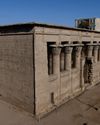
AN EGYPTIAN TEMPLE REBORN
By removing centuries of soot, researchers have uncovered the stunning decoration of a sanctuary dedicated to the heavens

THE SHELL SEEKERS
How hunter-gatherers in northern Florida facing an uncertain future revived a powerful symbol of their past

The Secrets of Porvenir
Remembering the victims of a 1918 massacre that shook a Texas border community
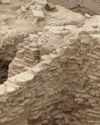
UNEARTHING ANELUSIVE EMPIRE
Archaeologists have discovered rare evidence of an enlightened medieval dynasty that ruled much of Central Asia
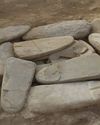
Ahead of Their Time
Excavations reveal the surprising sophistication of Copper Age villagers in southwestern Iran 6,000 years ago

ORIGINS OF PERUVIAN RELIGION
While investigating looters' holes at the site of La Otra Banda in northern Peru's Zaña Valley, archaeologist Luis A. Muro Ynoñán of the Field Museum and the Pontifical Catholic University of Peru spotted carved blocks around seven feet below the surface.
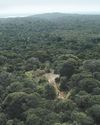
ISLAND OF FREEDOM
Many of the enslaved Africans sent to Brazil beginning in 1549 were from what is now Angola, where one of the most widely spoken languages was Kimbundu.
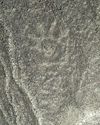
NAZCA GHOST GLYPHS
From the 1940s to the early 2000s, geoglyphs were discovered in the Nazca Desert of southern Peru depicting animals, humans, and other figures at the rate of 1.5 per year.
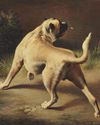
COLONIAL COMPANIONS
The ancestry of dogs in seventeenth-century Jamestown offers a window into social dynamics between Indigenous people and early colonists.

BAD MOON RISING
The British Museum houses around 130,000 clay tablets from ancient Mesopotamia written in cuneiform script between 3200 B.C. and the first century A.D.